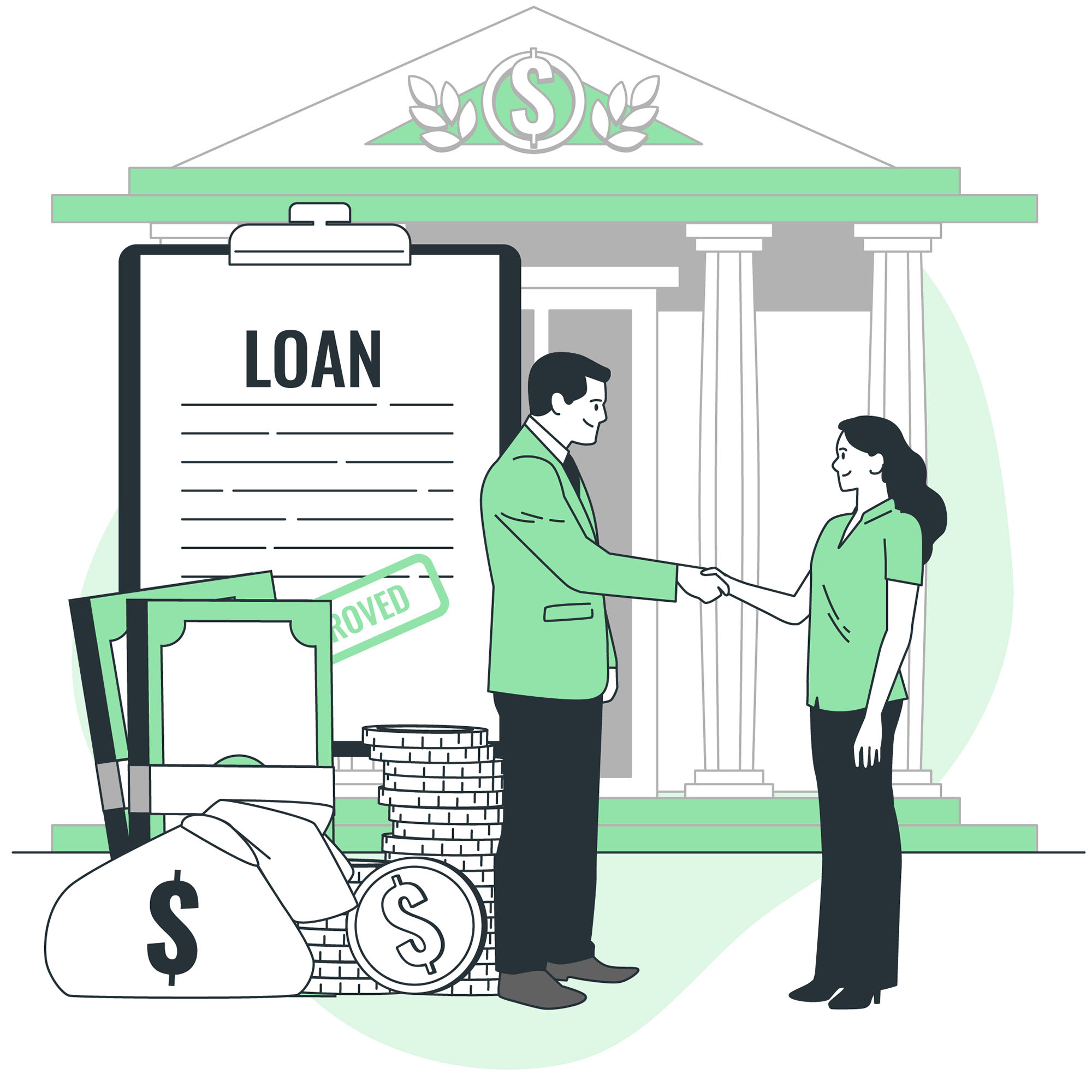Personal loans can be a lifesaver when you need extra funds for home improvements, debt consolidaion, medical bills, or even a big purchase like a wedding or vacation. However, with so many options on the market, finding the best personal loan offer can feel overwhelming. The good news is that if you know what to look for and how to compare offers, you can land a deal that meets your financial needs without breaking the bank.
In this guide, I’ll show you how to navigate personal loan offers, what factors to consider, and how to make the best choice for your situation. So, whether you’re looking for a low-interest loan, flexible repayment terms, or fast approval, read on to find out how to secure the best personal loan offer for your needs!
What is a Personal Loan?
A personal loan is a type of unsecured loan offered by banks, credit unions, or online lenders that can be used for a variety of purposes. Unlike auto loans or mortgages, personal loans don’t require collateral, meaning you don’t have to pledge assets like your car or home to qualify.
These loans typically come with fixed interest rates and fixed repayment terms, so your monthly payments will stay the same throughout the life of the loan. They are often used for consolidating debt, covering large expenses, or financing major life events.
Factors to Consider When Comparing Personal Loan Offers
Not all personal loans are created equal, so it’s essential to compare offers carefully to find the best deal. Here are the key factors to consider:
1. Interest Rates
The interest rate is one of the most important factors to consider when evaluating personal loan offers. The lower the rate, the less you’ll pay over the life of the loan. Personal loan interest rates typically range from 5% to 36%, depending on the lender, your credit score, and your financial profile.
Look for lenders that offer competitive rates. If you have a good or excellent credit score (typically 670 and above), you’ll have a better chance of qualifying for lower rates.
2. APR (Annual Percentage Rate)
In addition to the interest rate, be sure to check the APR, which includes any fees associated with the loan (such as origination fees). The APR gives you a more accurate picture of the true cost of the loan, making it easier to compare offers.
Lenders with low interest rates but high fees can end up costing more in the long run, so always consider the APR when comparing offers.
3. Loan Amount
Different lenders offer different loan amounts, typically ranging from $1,000 to $100,000. Consider how much you need to borrow and make sure the lender offers loans in that range.
Also, be careful not to borrow more than you need. While it may be tempting to take out a larger loan, it means higher monthly payments and more interest paid over time.
4. Loan Term
The loan term is the length of time you have to repay the loan, typically ranging from 12 months to 7 years. Shorter loan terms mean higher monthly payments but lower interest costs overall. Longer loan terms result in lower monthly payments but more interest paid over the life of the loan.
Choose a loan term that balances affordability with minimizing total interest paid. If you can afford higher monthly payments, opt for a shorter term to save on interest.
5. Fees
Many lenders charge fees for personal loans, including:
- Origination Fees: A fee charged for processing the loan, typically ranging from 1% to 8% of the loan amount. Some lenders don’t charge origination fees, so look for offers with no or low fees.
- Late Payment Fees: Charged if you miss a payment or don’t pay on time.
- Prepayment Penalties: Some lenders charge a fee if you pay off the loan early. Look for offers that don’t penalize early repayment.
Always review the loan’s fine print to understand the fee structure before signing up.
6. Speed of Funding
Need cash fast? Some lenders offer same-day or next-day funding, while others may take several days to disburse funds. If time is of the essence, be sure to compare how quickly each lender can get you the money.
7. Lender Reputation and Customer Service
Consider the lender’s reputation and customer service when evaluating offers. Look for reviews and testimonials to see how others have experienced their loans. Customer service is also crucial—having access to responsive support can make the process smoother, especially if you run into issues during the loan term.
Where to Find Personal Loan Offers
Now that you know what to look for, where can you find the best personal loan offers? Here are some common places to start:
1. Banks and Credit Unions
Traditional financial institutions like banks and credit unions often offer personal loans with competitive rates, especially for existing customers. Credit unions may offer lower rates and more flexible terms than traditional banks, but you usually need to be a member to apply for a loan.
2. Online Lenders
Online lenders have become a popular option for personal loans due to their fast approval process and competitive rates. Many online lenders offer a simple application process and can provide funding within a few days—or even the same day. Examples include LendingClub, SoFi, and LightStream.
3. Loan Comparison Websites
Loan comparison websites like LendingTree, NerdWallet, and Bankrate allow you to compare multiple offers from different lenders in one place. These tools can save you time and help you quickly identify which lenders offer the best rates and terms for your situation.
4. Peer-to-Peer Lending
Peer-to-peer lending platforms like Prosper and Upstart connect borrowers directly with investors who fund their loans. These platforms often have more flexible requirements than traditional lenders, making them a good option for those with less-than-perfect credit.
How to Qualify for the Best Personal Loan Offers
To get the best personal loan offers, you’ll need to demonstrate to lenders that you’re a low-risk borrower. Here are some tips to help you qualify for the best rates and terms:
1. Improve Your Credit Score
Your credit score is one of the biggest factors in determining your loan’s interest rate. Borrowers with excellent credit (usually 740 and above) will typically qualify for the lowest rates. If your credit score is lower, consider taking steps to improve it before applying for a loan. This can include paying off existing debt, making payments on time, and disputing any inaccuracies on your credit report.
2. Lower Your Debt-to-Income Ratio (DTI)
Lenders will evaluate your debt-to-income ratio (DTI) to determine how much debt you’re currently carrying compared to your income. A lower DTI suggests that you have a good handle on your debt and are less likely to default on the loan. If possible, pay off some of your existing debt to lower your DTI before applying.
3. Have a Steady Income
Lenders prefer borrowers who have a stable income, as it shows they can reliably make monthly payments. If you’re employed, make sure you can demonstrate consistent earnings. Self-employed applicants may need to provide additional documentation, such as tax returns, to prove their income.
4. Shop Around for the Best Rates
Don’t accept the first loan offer you receive. Instead, compare rates from multiple lenders to ensure you’re getting the best deal. Many lenders offer prequalification, which allows you to see potential loan terms and rates without affecting your credit score.
5. Consider a Co-Signer
If your credit score isn’t strong enough to qualify for the best rates, consider applying with a co-signer who has better credit. This can increase your chances of getting approved for a loan with favorable terms. Just keep in mind that your co-signer will be responsible for the loan if you default.
Conclusion: How to Secure the Best Personal Loan Offer
Personal loans can be a valuable financial tool, but only if you secure the right offer. By carefully comparing interest rates, loan terms, fees, and lender reputation, you can find a personal loan that fits your needs and saves you money in the long run.
Take the time to shop around, improve your credit score, and consider different lenders to maximize your chances of getting the best deal. With the right personal loan, you can cover your expenses, consolidate debt, or achieve your financial goals without unnecessary stress.
Frequently Asked Questions (FAQs)
What is a good interest rate for a personal loan?
A good interest rate for a personal loan is typically between 6% and 10%, especially if you have excellent credit. Borrowers with lower credit scores may see rates as high as 36%. Always compare APRs to get the most accurate picture of the loan’s cost.
How can I get approved for a personal loan?
To get approved for a personal loan, you’ll need a good credit score, a low debt-to-income ratio, and a steady income. Providing proof of employment or income and improving your credit score will increase your chances of approval.
Can I get a personal loan with bad credit?
Yes, it’s possible to get a personal loan with bad credit, but you may face higher interest rates and less favorable terms. Consider applying with a co-signer or looking for lenders that specialize in loans for people with lower credit scores.
What are the risks of taking out a personal loan?
Personal loans come with the risk of high-interest rates, especially if you have a lower credit score. Additionally, missing payments can hurt your credit score and lead to late fees. Be sure to borrow only what you need and can afford to repay.
What should I avoid when taking out a personal loan?
Avoid taking out loans with high fees or prepayment penalties, borrowing more than you need, or accepting a loan offer without comparing multiple options. Always read the loan’s fine print before signing to understand all terms and conditions.
Ready to find the perfect personal loan offer? Take control of your financial future by comparing offers and securing the best possible terms today!














